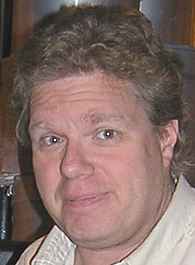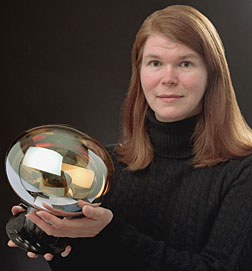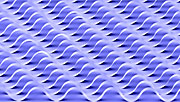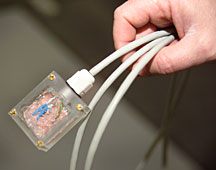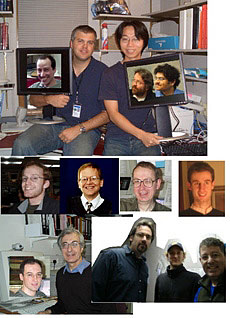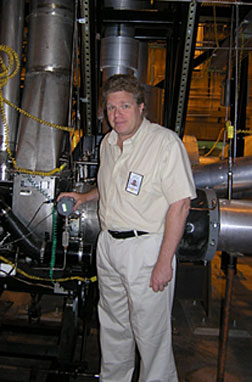| Research
|
David Tucker's life plays like an Indiana Jones movie: world travel, adventures, narrow escapes. Toss in quiet, multilingual chemistry professor turned researcher at DOE's National Energy Technology Laboratory, and the “Indy” Jones picture is complete. Tucker's circuitous path winds through his California birthplace and growing-up years in Washington and Alaska, meanders through Alabama long enough to complete a doctorate in physical chemistry at the University of Alabama and teach a while at the University of West Alabama, and eventually arrives at NETL in 2001. Tucker is heavily involved in the Hybrid Performance Project, an Office of Research and Development effort to study fuel cell turbine hybrids. The soft-spoken scientist has traveled to Africa 15 or 16 times, as well as through Europe, learning Swahili, Lingala, French, and Arabic along the way. He has studied Spanish, too, but confessed he's not fluent. Tucker earned his pilot's license at age 20 and then flew some friends to Africa, where they planned to open a gold and diamond mining business. War broke out and the friends took commercial flights home, leaving Tucker to recover from malaria, regain his strength, and fly the plane out of Africa. “I like exploring,” Tucker explained. “I like using the scientific method to study the world.” His adventuresome spirit and deep interest in his work animated Tucker as he described the apparatus he and his colleagues have built. “I am discovering things nobody else knows,” Tucker said. “That's what keeps me interested in my work.” An educator at heart—years earlier he had considered joining the Jesuits, the Catholic Church's teaching order—he prefers hands-on work and mentoring graduate students at NETL as they pursue their careers. Tucker and his wife, Helen, are the parents of a six-year-old daughter and a two-year-old son. They are expecting their third child in August.Submitted by DOE's
National Energy |
|||||||||||||||||||||||||||||||
|
Check out the Office of Science's new Website.
|
Supercomputing's
stellar
|
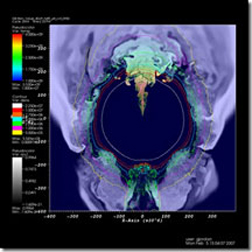 |
The 3D simulation was conducted by a team at the University of Chicago's Center for Astrophysical Thermonuclear Flashes (Flash Center) with the assistance of Laboratory computer scientists with the National Nuclear Security Administration's (NNSA) Advanced Simulation and Computing (ASC) Program.
The simulations were run on high performance computers at DOE's Lawrence Livermore and Lawrence Berkeley national laboratories. The Chicago team reported that just one of the jobs ran for 75 hours on 768 computer processors for a total of 58,000 processor hours.
Significant computing resources and funding was provided principally by NNSA's ASC Academic Strategic Alliance Program with support from the DOE Office of Science's Innovative and Novel Computation Impact on Theory and Experiment program.
“This exciting scientific and computing achievement dramatically illustrates the importance of multidisciplinary teamwork within and across institutions in making breakthrough science possible,” said Dona Crawford, LLNL's associate director for Computation.
Understanding the physics of thermonuclear burn, such as that in supernovae, is of great interest to NNSA scientists responsible for ensuring the safety, security and reliability of the nation's nuclear stockpile in the absence of underground nuclear testing. NNSA supports science relevant to its national security missions through academic alliances, notably in the area of computation.
SC's Academic Alliance Program has established centers for advancing simulation science at Caltech, Stanford University, the University of Illinois Champaign/Urbana, and Utah in addition to the University of Chicago.
Submitted by DOE's
Lawrence Livermore
National Laboratory
